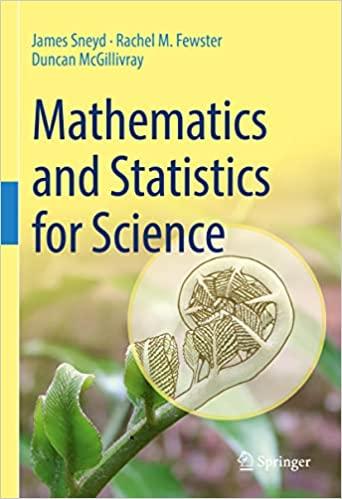Consider the deep-sea diver example in Section 33.2. There are 65 sons and 125 daughters in a
Question:
Consider the deep-sea diver example in Section 33.2. There are 65 sons and 125 daughters in a sample of 190 children fathered by deep-sea divers. We did a hypothesis test to see whether this could happen by chance.
Say whether each of the following statements is true or false.
If the statement is false, explain why.
a. We are using the sample of 190 children to learn about the wider population of children fathered by deep-sea divers in the world.
b. We can conceptualise a generic deep-sea diver repeatedly fathering children, and we want to know whether he is equally likely to produce a son or a daughter on each occasion.
c. Our interest and conclusions must be restricted purely to the 190 children in the study.
d. There are limits to how lucky it’s reasonable to be in a physical situation, determined by the laws of probability.
Our aim is to test whether the data of 125/190 daughters was "too lucky" to happen by chance.
e. The P-value is a true, fixed, population quantity that we’re trying to estimate.
Step by Step Answer:

Mathematics And Statistics For Science
ISBN: 9783031053177
1st Edition
Authors: James Sneyd, Rachel M. Fewster, Duncan McGillivray






